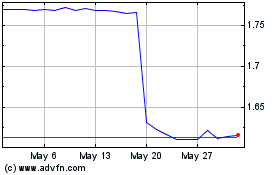Iran's comeback as a crude-oil exporter appears to have stalled
seven months after Western sanctions over its nuclear program were
lifted, casting fresh uncertainty over the country's willingness to
cooperate with other producers on output.
Iran's production levels have taken on heightened significance
in recent weeks as the Organization of the Petroleum Exporting
Countries gets ready for talks next month on oil output. Iran has
previously refused to consider joining fellow OPEC members in
action to lift crude prices by curbing output until its exports and
production reach presanctions levels.
But the country's ability to reach pre-sanctions levels above 4
million barrels a day are now in question. Iran's crude-oil
production stands at 3.85 million barrels a day in August, the
country's oil minister Bijan Zanganeh said Saturday, little changed
from above 3.8 million barrels a day he cited in June. That is up
from less than 3 million barrels a day from before sanctions were
lifted in January but short of the country's stated goals.
The International Energy Agency says Iran's crude production
actually fell in July, to 3.6 million barrels a day.
Iran's crude-oil exports have also plateaued after nearly
doubling from January to May. Mohsen Ghamsari, the head of oil
marketing at the National Iranian Oil Co, told state media last
week that the country was still short of pre-sanctions exports by
200,000 barrels a day.
Iran has told OPEC that it plans to participate in next month's
talks, national delegates to the cartel say, but the country hasn't
said it would soften its conditions for actually joining in
production limits. Iran and fellow OPEC member Ecuador talked
Wednesday about stabilizing oil prices, Ecuadorean official
said.
Iran's stalled production "will complicate the negotiations,"
John Hall, chairman at UK consultancy Alfa Energy and longtime
observer of OPEC. "It's going to be difficult. The Iranians are not
going back down."
On the other hand, some within OPEC say, Iran hitting a natural
ceiling on its output might be enough to convince a rival like
Saudi Arabia to join an output agreement next month. Saudi Arabia
has pumped its own production up to record levels this summer and
may be more inclined to make a deal next month if Iran seems
weak.
A government oil official at a Persian Gulf nation said the
situation could make it easier for OPEC members to mend fences.
"Iran's production seems to be stuck at a certain level and not
rising like before," the official said.
Iran has faced two significant obstacles in its quest to return
to pre-sanctions production levels: a lack of foreign investment
and its own unwillingness to undercut rivals on pricing.
Lingering American sanctions on Iran over terrorism, human
rights and weapons continue to make it difficult for Iran to do
business with European crude-oil buyers, whom the Islamic Republic
had been counting on to lift its exports. The American sanctions
ban dollar transactions with Iran, requiring European companies
with U.S. business to go to great legal lengths to do deals
there.
"Other exporters took Iran's place during the sanctions," said
Erfan Ghassempour, an adviser to foreign oil companies in Iran.
"Now it will take time for Iran to take back its old friends."
A case in point is Italy, which was Iran's largest oil importer
in the European Union before the bloc embargoed its crude in 2012.
Italy didn't buy any Iranian crude in the first five months of the
year, according to statistics released by industry body Unione
Petrolifera last month.
Sardinia-based refiner Saras SpA was forced to delay its first
Iranian cargo to June "because of the difficulties of establishing
financial and banking lines to operate effectively with Iran," its
general manager Dario Scaffardi told analysts on Aug. 1. An
official at the company said most banks had initially refused to
handle the transactions because they feared they could violate
remaining Washington's sanctions.
Obama administration officials have repeatedly told European
banks they can deal with Tehran.
Despite the banking issues, Iran has refused to discount its oil
against other producers,according to European refiners and Iranian
officials. Saudi Arabia has aggressively cut the price of its oil,
and Iran has matched those cuts -- though they have never gone
deeper to make up for the hassle of obtaining financing to buy its
crude.
"In this context, Iran is just too expensive," an Italian
refinery official said.
An Iranian oil official said Tehran doesn't want to sell its oil
off on the cheap, seeing it as a precious and finite national
resource. Iran also has a more diverse economy than many of its
rivals, with petroleum revenue accounting for about 29% of its
national budget.
Reaching presanctions levels is a key goal of moderate Iranian
President Hassan Rouhani as he tries to woo the opinion over the
merits of the international deal that lifted restrictions on
Tehran's exports in January but also placed curbs on the country's
nuclear program.
That could prove challenging. Apart from competition from
rivals, underinvestment in Iranian oil fields is also capping
exports, said Hamid Hosseini, a board member of Iran's oil
exporters' association.
Homayoun Falakshahi, an oil industry analyst at oil-consultancy
Wood Mackenzie, said that oil production initially ramped up faster
than expected because pressure was very high in wells that had been
shut for years. But Iran will struggle to pump more because the
fields have high depletion rates and now need significant
investment at a time when Iran remain cash-strapped, said Mr.
Falakshahi, who visited key oil-producing facilities in Iran this
spring.
Summer Said contributed to this article.
Write to Benoit Faucon at benoit.faucon@wsj.com
(END) Dow Jones Newswires
August 25, 2016 08:35 ET (12:35 GMT)
Copyright (c) 2016 Dow Jones & Company, Inc.
Saras Raffinerie Sarde (BIT:SRS)
Historical Stock Chart
From Nov 2024 to Dec 2024

Saras Raffinerie Sarde (BIT:SRS)
Historical Stock Chart
From Dec 2023 to Dec 2024
